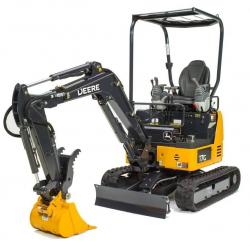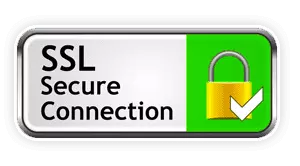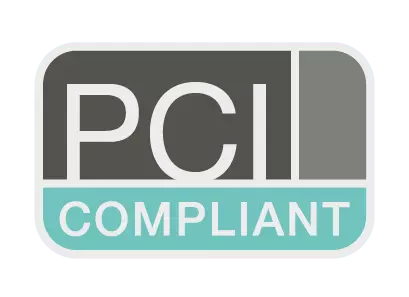John Deere 17G Compact Excavator Operator's Manual (OMT361076X19)
John Deere 17G Compact Excavator Operator's Manual (OMT361076X19)
OMT361076X19 - John Deere 17G Compact Excavator Operator's Manual.pdf
Complete Operator's Manual for John Deere 17G Compact Excavator.
JOHN DEERE 17G EXCAVATOR OPERATORS MANUAL OMT361076X19
CONTENTS OF THE OPERATOR‘S MANUAL
YOUR VEHICLE (MAIN CONTENTS)
DRIVER AMND PASSENGER SAFETY (SEAT BELTS, SRS AND CHILD PROTECTION)
INSTRUMENTS AND CONTROLS (INDICATORS, GAUGES,INFORMATION DISPLAY, DASHBOARD, AND STEERING CONTROL)
FEATURES (CLIMATE CONTROL, AUDIO, STEERING WHEEL, SECURITY AND CRUISE CONTROL)
BEFORE DRIVING (FUEL, VEHICLE BREAK-IN AND CARGO LOADING)
DRIVING (ENGINE AND TRANSMISSION OPERATION)
MAINTENANCE (MINDER, FLUID CHECKING, MINOR SERVICES AND VEHICLE STORAGE)
TAKING CARE OF THE UNEXPECTED (FLAT TIRE, DEAD BATTERY, OVERHEATING FUSES)
TECHNICAL INFORMATION (VEHICLE SPECIFICATIONS, TIRES, AND EMISSIONS CONTROLS)
WARRANTY AND CUSTOMER RELATIONS
PRODUCT DETAILS:
Total Pages: 397 pages
File Format: PDF (bookmarked, Searchable, Printable, high quality)
Language: English
omt361076x19 - 17G Compact Excavator (PIN: 1FF017GX_ _K225001— )
Table of Contents
Foreword
Manual Identification—READ THIS FIRST!
IMPORTANT
Technical Information Feedback Form
Section 1-1: Safety—Safety and Operator Convenience
Safety and Operator Convenience Features
Section 1-2: Safety—General Precautions
Recognize Safety Information
Follow Safety Instructions
Operate Only If Qualified
Wear Protective Equipment
Avoid Unauthorized Machine Modifications
Control Pattern Selector—If Equipped
Add Cab Guarding for Special Uses
Inspect Machine
Stay Clear of Moving Parts
Avoid High-Pressure Fluids
Avoid High-Pressure Oils
Work In Ventilated Area
Avoid Static Electricity Risk When Refueling
Prevent Fires
In Case of Machine Fire
Prevent Battery Explosions
Handle Chemical Products Safely
Dispose of Waste Properly
Prepare for Emergencies
Clean Debris from Machine
Section 1-3: Safety—Operating Precautions
Use Steps and Handholds Correctly
Start Only From Operator's Seat
Use and Maintain Seat Belt
Prevent Unintended Machine Movement
Avoid Work Site Hazards
Keep Riders Off Machine
Avoid Backover Accidents
Avoid Machine Tip Over
Use Special Care When Lifting Objects
Inspect and Maintain ROPS
Travel Safely
Prevent Acid Burns
Add and Operate Attachments Safely
Section 1-4: Safety—Maintenance Precautions
Park and Prepare for Service Safely
Service Cooling System Safely
Remove Paint Before Welding or Heating
Make Welding Repairs Safely
Drive Metal Pins Safely
Section 1-5: Safety—Safety Signs and Other Instructions
Safety Signs and Other Instructions
Section 2-1: Operation—Operator Station
Switch Panel
Key Switch
Monitor Panel and Functions
Pedals and Levers
Engine Speed Control Lever
Pilot Shutoff Lever
Fire Extinguisher Mounting Location
Adjusting Operator’s Seat
Operator’s Manual Compartment
Section 2-2: Operation—Operating the Machine
Before Starting Work
Operating in High Altitude
Inspect Machine Daily Before Starting
Check Instruments
Starting Engine
Starting Engine in Cold Weather
Cold Weather Warm-Up
Travel Levers
Travel Mode Pedal
Control Lever Pattern Operation
Control Lever Pattern Conversion
Boom-Swing Pedal
Auxiliary Pedal
Positioning Auxiliary Line Selector Valve
Extendable/Retractable Undercarriage Lever
Blade Extender
Operating Backfill Blade
Operating Tips—Backfill Blade
Operating in Water and Mud
Driving Up a Steep or Slippery Slope
Lower Boom With Engine Stopped
Parking
Loading and Unloading for Transport
Towing Machine a Short Distance
Lifting
Lifting Machine
Section 3-1: Maintenance—Machine
Diesel Fuel
Diesel Fuel Specifications
Lubricity of Diesel Fuel
Handling and Storing Diesel Fuel
BioDiesel Fuel
Testing Diesel Fuel
Supplemental Diesel Fuel Additives
Fuel Filters
Minimizing the Effect of Cold Weather on Diesel Engines
Alternative and Synthetic Lubricants
Mixing of Lubricants
Lubricant Storage
John Deere Break-In Plus™ Engine Oil — Interim Tier 4, Final Tier 4, Stage IIIB, and Stage IV
Diesel Engine Oil — Interim Tier 4, Final Tier 4, Stage IIIB, and Stage IV
Engine Oil and Filter Service Intervals — Interim Tier 4, Final Tier 4, Stage IIIB, and Stage IV Engines
Oil Filters
Hydraulic Oil
Travel Gear Case Oil
Grease
Diesel Engine Coolant (engine without wet sleeve cylinder liners)
Water Quality for Mixing with Coolant Concentrate
Operating in Warm Temperature Climates
Testing Coolant Freeze Point
Disposing of Coolant
Section 3-2: Maintenance—Periodic Maintenance
Service Machine at Specified Intervals
Check the Hour Meter Regularly
Prepare Machine for Maintenance
Engine Access Door
Maintenance Access Door
Forward Engine Access
Fuel Tank
Hydraulic Breaker and Crusher Attachments
Fluid Analysis Program Test Kits and 3-Way Coolant Test Kit
Service Intervals
Required Parts
Section 3-3: Maintenance—As Required
Clean Cooler Cores
Check and Clean Air Cleaner Dust Unloader Valve
Replace Engine Air Filter
Drain Water and Sediment From Fuel Tank Sump
Check Track Sag—Rubber Track
Adjust Track Sag
Section 3-4: Maintenance—Every 10 Hours or Daily
Check Engine Oil Level
Check Hydraulic Tank Oil Level
Drain Water Separator
Check Engine Coolant Level
Check Bucket Teeth
Check Seat Belt
Lubricate Bucket and Link Pins
Lubricate Front End Pin Joints
Section 3-5: Maintenance—Initial Service—50 Hours
Drain and Refill Engine Oil and Replace Filter
Check and Adjust Fan Belt Tension
Section 3-6: Maintenance—Every 100 Hours
Lubricate Bucket and Link Pins
Lubricate Front End Pin Joints
Check and Adjust Fan Belt Tension
Section 3-7: Maintenance—Initial Service—250 Hours
Replace Hydraulic Tank Oil Filter
Section 3-8: Maintenance—Every 250 Hours
Lubricate Swing Bearing
Check Travel Gear Case Oil Level
Drain Water and Sediment From Hydraulic Tank
Drain and Refill Engine Oil and Replace Filter
Take Engine Oil Sample
Section 3-9: Maintenance—Every 500 Hours
Lubricate Front End Pin Joints
Lubricate Swing Bearing Gear
Lubricate Control Lever Universal Joint
Replace Fuel Filter
Replace Hydraulic Tank Oil Filter
Take Fluid Samples
Section 3-10: Maintenance—Every 1000 Hours
Drain and Refill Travel Gear Case Oil
Replace Pilot System Oil Filter
Check and Adjust Engine Valve Lash
Check Starter and Alternator
Section 3-11: Maintenance—Every 2000 Hours
Drain Cooling System
Cooling System Fill and Deaeration Procedure
Drain and Refill Hydraulic Tank Oil and Clean Suction Screen
Section 4-1: Miscellaneous—Machine
Do Not Service or Adjust Injection Nozzles or High-Pressure Fuel Pump
Do Not Service Control Valves, Cylinders, Pumps, or Motors
Precautions for Alternator and Regulator
Handling, Checking, and Servicing Batteries Carefully
Using Battery Charger
Using Booster Batteries—12-Volt System
Replacing Battery
Welding on Machine
Bleed Hydraulic System
Clean the Machine Regularly
12-Volt Auxiliary Power Outlet
Replacing Fuses
Installing Bucket With Quick Coupler
Replacing Bucket Teeth
Replacing Bucket Tooth Tip—Heavy-Duty Bucket
Removing the Bucket
Track Sag General Information
Rubber Track Care
Removing and Installing Rubber Track
Hardware Torque Specifications
Unified Inch Bolt and Screw Torque Values
Metric Bolt and Screw Torque Values
Section 4-2: Miscellaneous—Operational Checkout
Operational Checkout
Section 4-3: Miscellaneous—Troubleshooting
Troubleshooting Procedure
Engine
Electrical System
Hydraulic System
Section 4-4: Miscellaneous—Storage
Prepare Machine for Storage
Monthly Storage Procedure
Section 4-5: Miscellaneous—Serial Numbers
Record Product Identification Number (PIN)
Record Engine Serial Number
Keep Proof of Ownership
Keep Machines Secure
Section 4-6: Miscellaneous—Specifications
Engine Specifications
Drain and Refill Capacities
Machine Specifications
Working Ranges
Lift Capacity—Arm: 0.93 m (3 ft. 1 in.); Bucket: 39 kg (86 lb.); Shoe: 230 mm (9 in.); Blade on Ground







